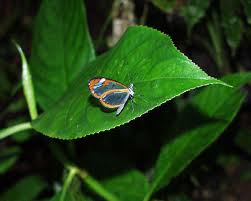Ecology
“The ecology of the Loughanleagh is fundamental to the beauty of the area. In this page we detail some of the ecology of the surrounding area to give a flavour of the Loughanleagh environment”
The slopes of Loughanleagh Mountain, up to a height of approximately 270m are used for agriculture by local farm families. There is a relatively intact hedge network on local farms and it appears that hedgerow removal has not been excessive.
The top of Loughanleagh mountain is a mixture of open dry heath, small patches of wet heath and large tracts of commercial coniferous forestry. Because the heath area is non-productive in agricultural terms it has not been cultivated. The boundary between agricultural and heath is marked by a combination of hedgerow and post and wire fences. The heath is owned by a number of local farmers, but there are no obvious field boundaries dividing fences. Commercial coniferous forestry at Cornasaus is owned by Green Belt and the remainder of the forestry at Loughanleagh is owned by Coillte.
The top of Loughanleagh mountain is a mixture of open dry heath, small patches of wet heath and large tracts of commercial coniferous forestry. Because the heath area is non-productive in agricultural terms it has not been cultivated. The boundary between agricultural and heath is marked by a combination of hedgerow and post and wire fences. The heath is owned by a number of local farmers, but there are no obvious field boundaries dividing fences. Commercial coniferous forestry at Cornasaus is owned by Green Belt and the remainder of the forestry at Loughanleagh is owned by Coillte.
Habitat Description and plant list
It has been estimated that there are approximately 100 acres (40Ha) of heath on Loughanleagh. Almost all the higher ground (above 300m) on the mountain comprises of intact “Dry Heath” habitat which extends down on both sides of the ridge on more gentle and moderate slopes. There are small areas of wet heath in flatter terrain and occasional bushes of gorse.
Species noted were: Ling Heather (Calluna vulgaris), dominant, Bell Heather (Erica cinerea) and cross-leaved heath (Erica tetralix) . Bilberry (Vaccinium myrtillus), Fescue (Festuca rubra), Heath Rush (Juncus squarrosus), Soft Rush (Jucncus effusus), Heath Wood-rush (Luzula multiflora), Gorse (Whins/Furze) (Ulex europeaus), Willow (Salix spp), bramble (Rubus agg.), bracken(Pteridium acquilinium), Litchen (cladonis spp), ling heather (Hypnum jutlanicum), Moss (dicranum spp), Common sottongrass (Eriophorum angustifoliu ), Mosses (Sphagnum subritens, S. Capillifolium, S. palustre, S recurvum). There are many other species including many winter-dormant species.
Also, in the recently published ‘Flora of County Cavan’, by P.A. Reilly, the following species have been recently recorded on Lough-An-Leagh: Stag’s-horn Clubmoss (Lycopodium clavatum), Fir Clubmoss (Huperzeria selago), Marsh Lousewort (Pedicularis palustris), Scentless Mayweed (Matricaria inodorum), Luzula multiflora Subsp. Congesta, Black bog-rush (Schoenus nigricans), Lesser Twayblade (Listera cordata).
In 2002, the Trust commissioned Ms. Anne R. Behan, Ph.D, Environmental Consultant to compile a report “A Study of Ecology and Interactions at Loughanleagh,Co.Cavan”, in relation to the proliferation of telecommunications masts on Loughanleagh mountain. Many of the aforementioned species are covered in detail in this report and her research was deep and thorough covering detailed aspects of ecology, botany & archaeology. Her final report highlights the considerable ecological value in the combination of habitats on Loughanleagh and emphasised its importance to the human population in terms of amenity, heritage associations, local economy, health, well-being and interactions and makes note of the negative impacts of some of the developments there. Her recommendations include a list of protections to be enforced in regard to the “Heath”, Peregrine Falcon”,Archaeological Monuments”, “the landscape” and planning decisions in regard to telecommunications masts.
Ann R. Behan, Ph.D, Environmental Consultant
Extract of report: Dated 8th October 2002.
http://en.wikipedia.org/wiki/Ecology

